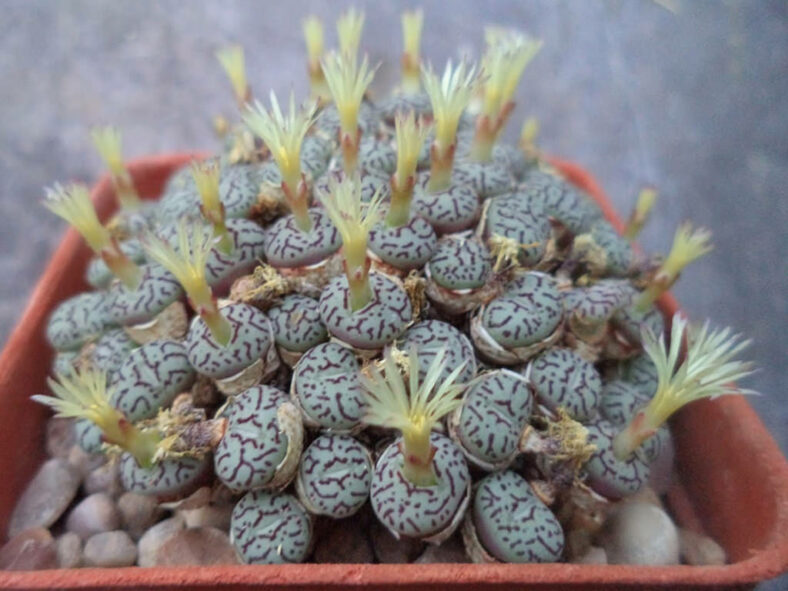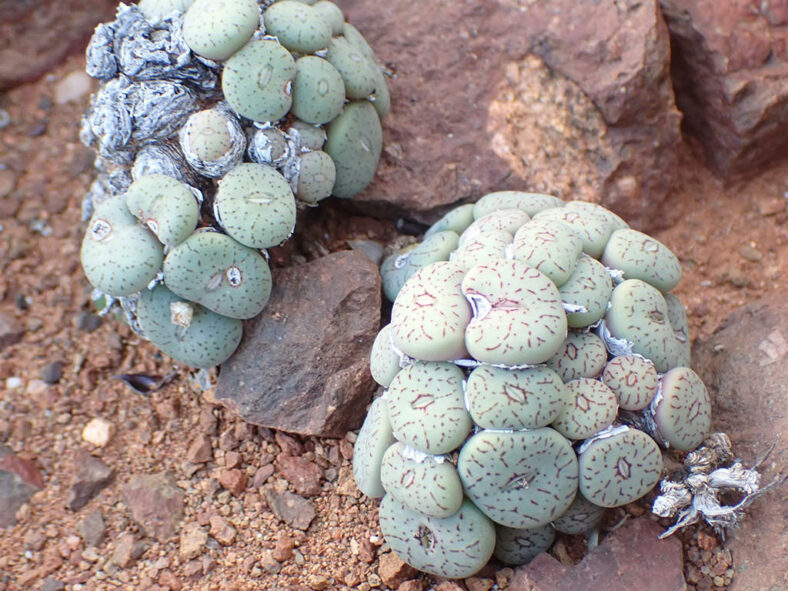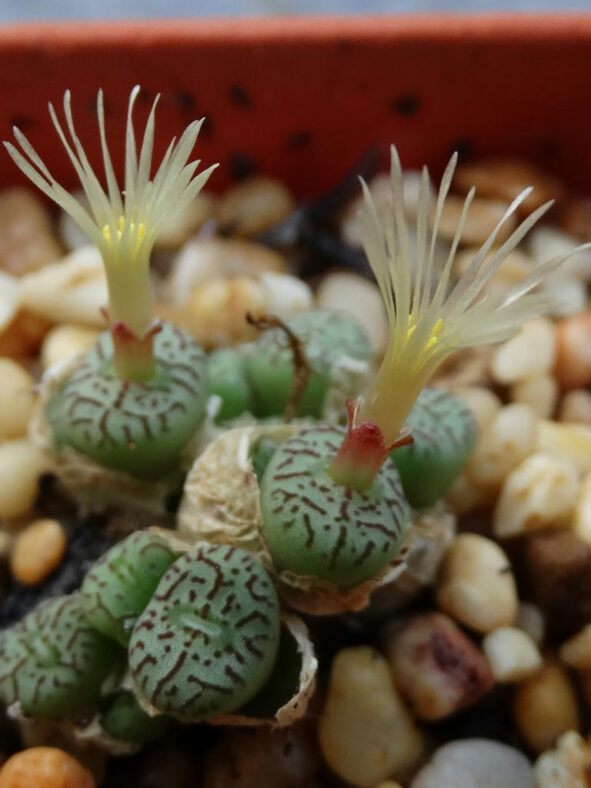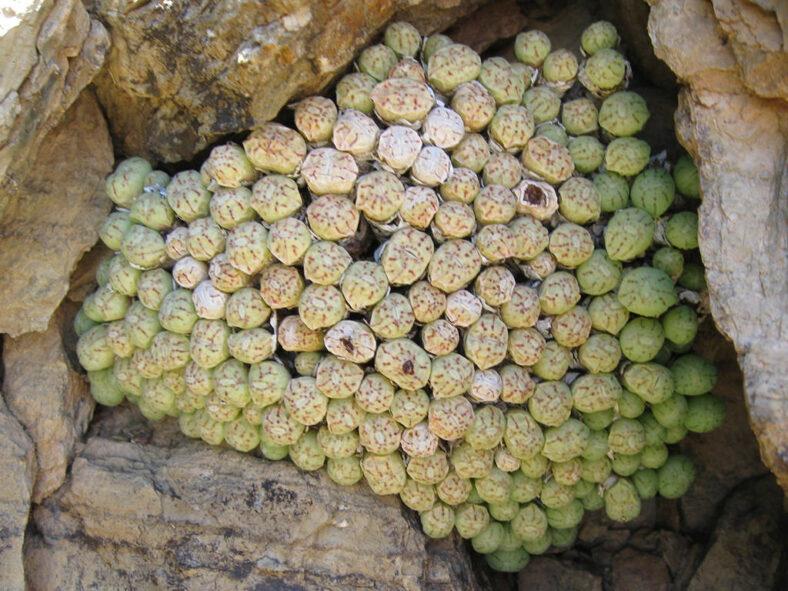Conophytum minimum is an eye-catching dwarf succulent with unmistakable markings that can be either quite minimal or highly pronounced.
Scientific Name
Conophytum minimum (Haw.) N.E.Br.
Synonym(s)
Mesembryanthemum minimum
Scientific Classification
Family: Aizoaceae
Subfamily: Ruschioideae
Tribe: Ruschieae
Genus: Conophytum
Etymology
The specific epithet "minimum" (pronounced "MIN-eh-mum") means "smallest, littlest, most puny" and refers to the size of the bodies of this species.
Origin
Conophytum minimum is native to South Africa. It grows on shale or sandstone rocks in the Western Cape province.
Description
Conophytum minimum is a dwarf succulent that forms loose mats or domes of bodies that consist of two opposite, almost completely fused leaves. The bodies are elliptical in outline and can grow up to 0.6 inches (1.5 cm) tall and 0.25 inches (0.6 cm) in diameter. They are smooth to finely papillate and adorned with distinctive spots and streaks. During the summer resting period, the old leaf pair slowly dries up, forming a white sheath to protect the new leaves growing inside, which will emerge in the fall.
In fall and early winter, Conophytum minimum produces nocturnal flowers ranging from white to pale yellow or pale pink. The fruits are four- or five-locular capsules.

How to Grow and Care for Conophytum minimum
Light: This plant thrives in bright light but should be protected from intensive direct sunlight. To avoid sunburn, place it in an area where it can receive a few hours of full sun during the cooler parts of the day.
Soil: Conophytum minimum requires porous soil that allows water to drain away quickly for optimum growth. You can use a commercial potting mix designed for succulents or make your own.
Temperature: This plant tolerates high temperatures but is not frost-hardy. It grows best in USDA Plant Hardiness Zones 10b to 11b, with average minimum winter temperatures ranging from 35 to 50 °F (1.7 to 10 °C).
Watering: Conophytum minimum requires little or no water during its dormancy from spring to summer. When it begins to grow again in the fall, it is safe to water it deeply. However, ensure that the soil dries out between waterings. If the leaves begin to wrinkle during the active growth period, it may indicate that additional water is needed.
Fertilizing: This plant is a light feeder and does not need fertilizer if repotted every two years.
Repotting: The best time to repot this plant is at the beginning of the growing season, but it can also be done at any point during active growth.
Propagation: Conophytum minimum is usually propagated from seeds, but can be easily propagated by division. The ideal time to divide the plant is before it starts to break dormancy or after flowering.
Learn more at How to Grow and Care for Conophytum.
Toxicity of Conophytum minimum
Conophytum minimum is considered non-toxic, so growing around children and pets is safe.
Forms of Conophytum minimum
Links
- Back to genus Conophytum
- Succupedia: Browse succulents by Scientific Name, Common Name, Genus, Family, USDA Hardiness Zone, Origin, or cacti by Genus
Photo Gallery
Click on a photo to see a larger version.


